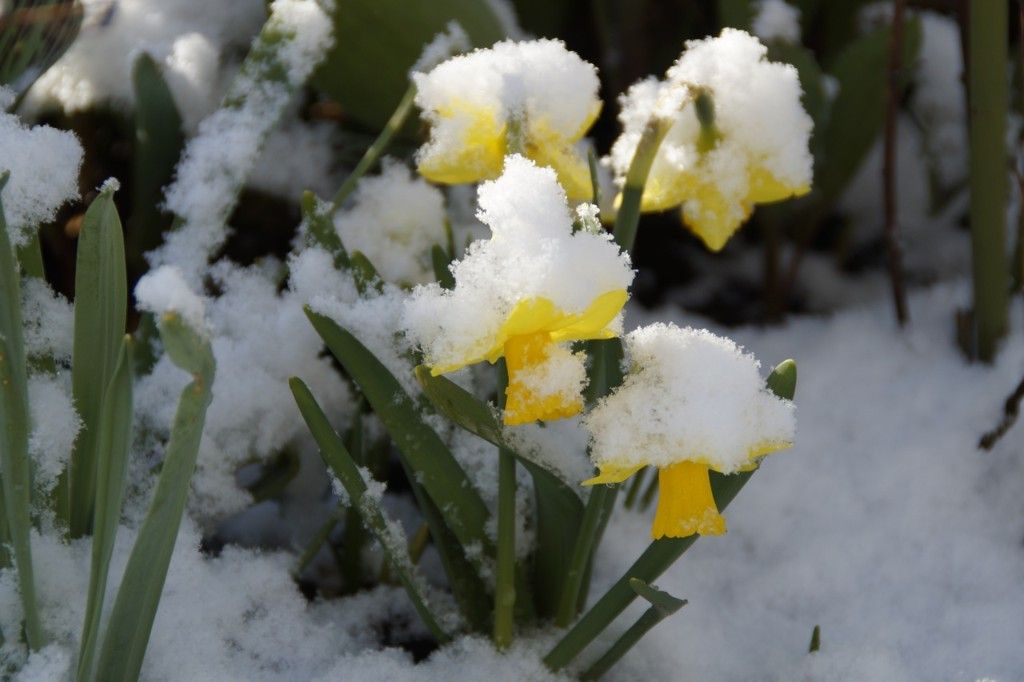When we are awaiting the beginning of gardening season in early spring, we sometimes have periods of cold where tender plants, such as the emerging perennials in our gardens, are at risk.
Temperatures, even those that remain above 32F degrees, may still damage plants. When they do, it’s called “chill injury.” However, if the temperature that has been warmer than freezing suddenly hits 32F degrees or below, the effect that is triggered in the garden is called a frost.
If we have vulnerable plants in our early spring flower garden and the forecast predicts frost, we need to take protective action.* Actually, any prediction of temperatures even close to freezing should be cause for alarm.*
A visible white coating, or freezing temperatures in the absence of visible signs, will hurt vulnerable plants because low temperatures cause both dehydration and disturbance of cell membranes deep within cell tissues. This results in blackened, lifeless leaves and stems.
Different parts of the garden, such as hollows or areas near walls and hedges and southern exposures, may vary in temperature from other parts of a garden.
Remember the danger of sudden spring frosts and wait to set out your tender annuals, and protect vulnerable perennials coaxed out too early by warm days. Plants grow more quickly when temperatures warm more and stay warm. Don’t plant too early!
This is Moya Andrews and today we focused on air temps.










